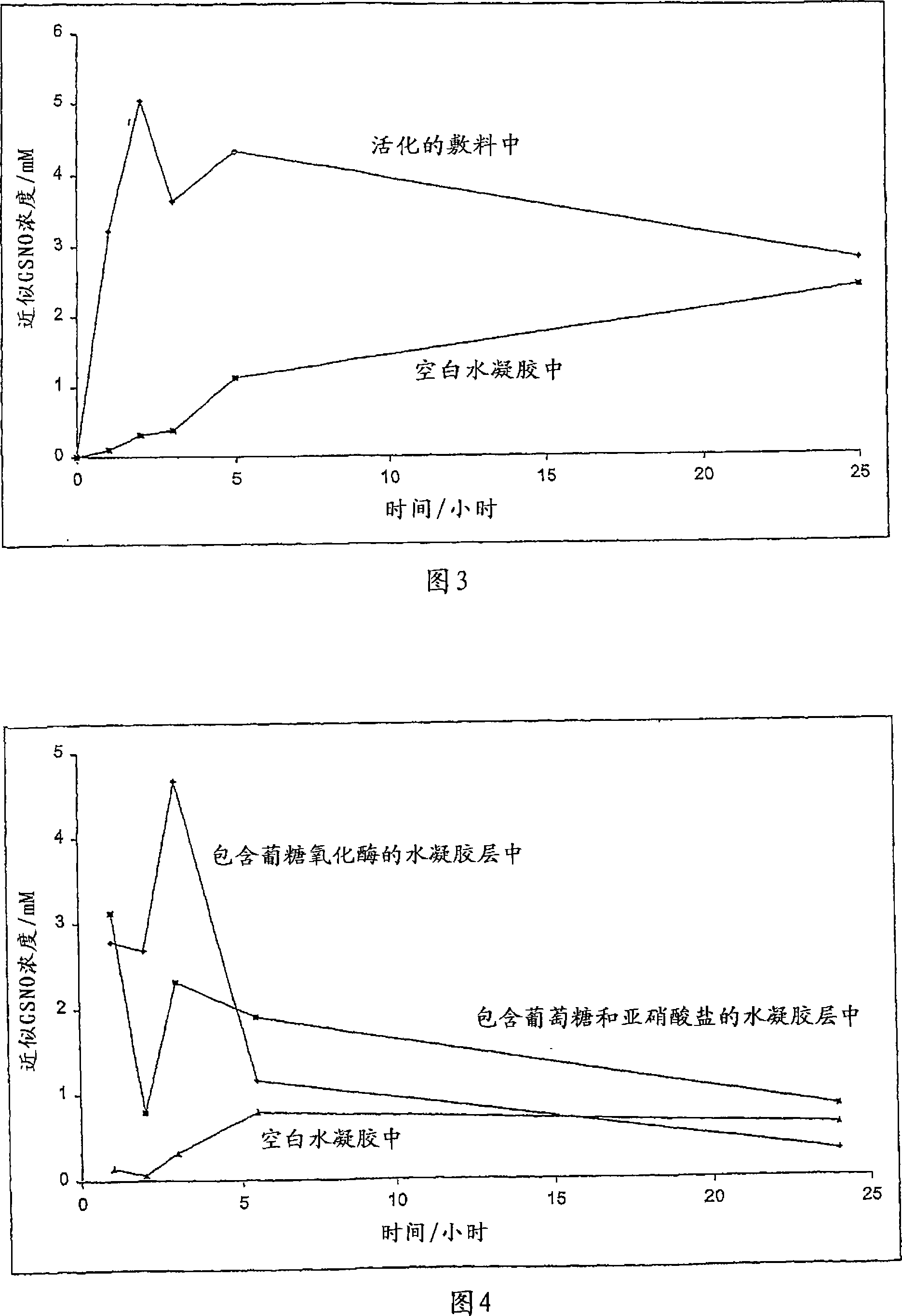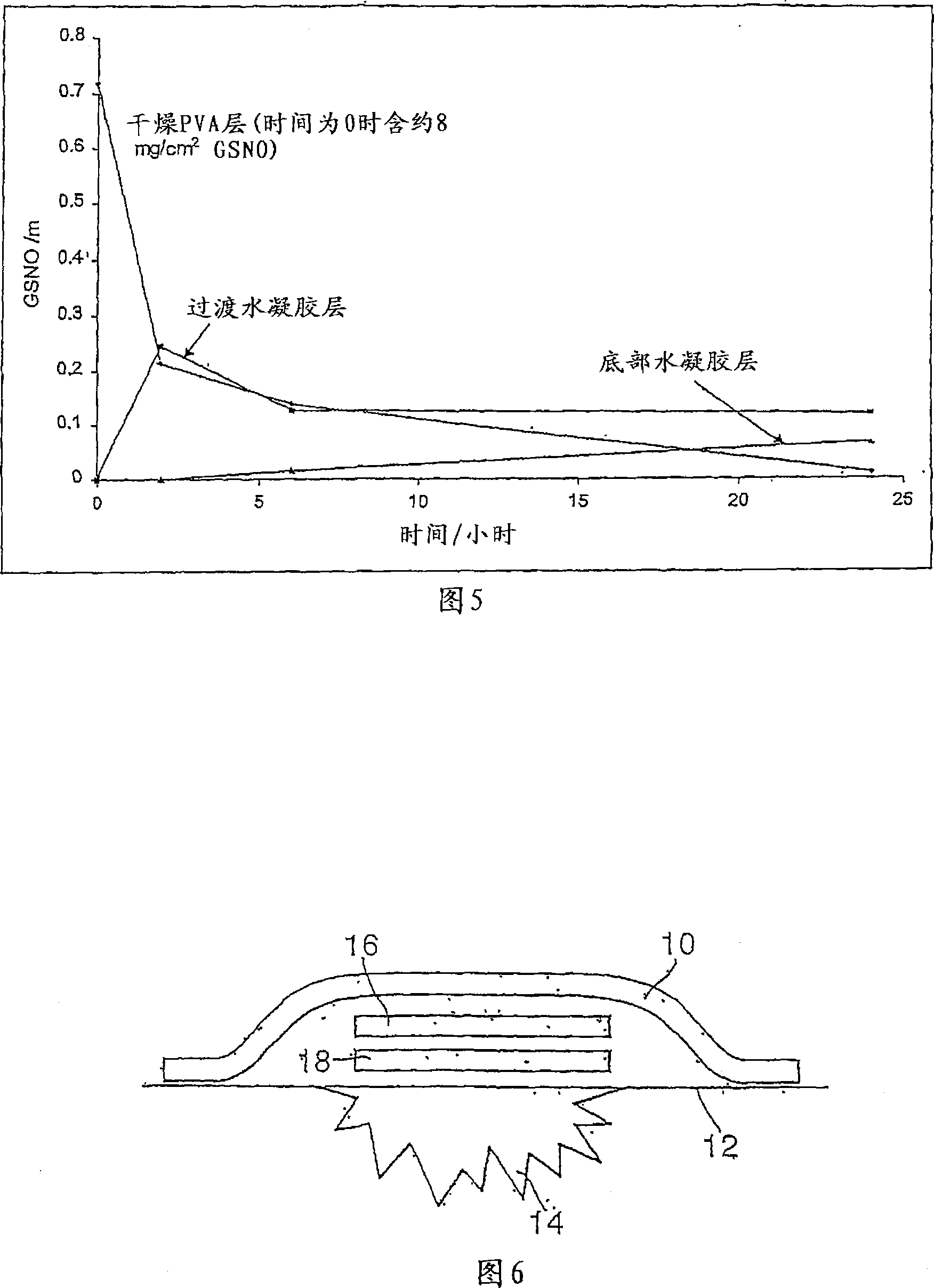Improvements relating to skin dressings
A skin and nitrosothiol technology, applied in skin diseases, drug combinations, bandages, etc., can solve problems such as insufficient vasodilation, oxidative stress limitation, etc.
- Summary
- Abstract
- Description
- Claims
- Application Information
AI Technical Summary
Problems solved by technology
Method used
Image
Examples
Embodiment 1
[0174] Example 1: Effect of pH on GSNO Production in Aqueous Systems Containing L-Glutathione and Potassium Nitrite The role of growth / decomposition rate
[0175] The effects of GSNO containing potassium nitrite ( 5 mM) and L-glutathione (5 mM) in solution and the subsequent rate of decomposition. The results are shown in Figure 1. No production of GSNO was observed at pH 7. The initial production of GSNO was slower at pH 5 compared to pH 3. Compared with pH 3, the stability of GSNO produced at pH 5 is slightly higher.
Embodiment 2
[0176] Example 2: Generation of S-nitrosoglutathione in (unbuffered) activated hydrogel dressings
[0177] Concentration profiles of GSNO in activated dressings were measured in the absence of an additional source of protons. The first layer of the dressing consisted of a polyAMPS hydrogel containing potassium nitrite (30 mM). The second layer consisted of dry PVA (5%) containing L-glutathione (30 mM). No additional proton source was introduced into the dressing. The layers were brought together to activate the dressing and the results are shown in FIG. 2 . The concentration of GSNO generated in the dressing reached a maximum after about 2 hours. Subsequently, its concentration decreased slowly and steadily due to the slow decomposition of GSNO. GSNO was still measurable in the dressing 48 hours after activation.
Embodiment 3
[0178] Example 3: S-nitrosoglutathione from activated hydrogel dressings (without introducing additional protons source) to the blank hydrogel release
[0179] The first layer of the dressing consisted of a polyAMPS hydrogel containing potassium nitrite (30 mM). The second layer consisted of dry PVA (5%) containing L-glutathione (30 mM). No additional proton source was introduced into the dressing. Bringing the first and second layers together activates the dressing. Activated dressings were placed on blank hydrogel sheets (30% polyAMPS). The generation of GSNO inside the dressing and its gradual release into the blank hydrogel were measured and the results are shown in Figure 3.
[0180] The concentration of GSNO in the activated dressing reached a maximum at about 2 hours after the dressing was activated. Subsequently, its concentration decreased slowly and steadily due to the slow decomposition of GSNO. A slow stepwise release of GSNO from the activated dressing in...
PUM
| Property | Measurement | Unit |
|---|---|---|
| thickness | aaaaa | aaaaa |
Abstract
Description
Claims
Application Information
 Login to View More
Login to View More - R&D
- Intellectual Property
- Life Sciences
- Materials
- Tech Scout
- Unparalleled Data Quality
- Higher Quality Content
- 60% Fewer Hallucinations
Browse by: Latest US Patents, China's latest patents, Technical Efficacy Thesaurus, Application Domain, Technology Topic, Popular Technical Reports.
© 2025 PatSnap. All rights reserved.Legal|Privacy policy|Modern Slavery Act Transparency Statement|Sitemap|About US| Contact US: help@patsnap.com



